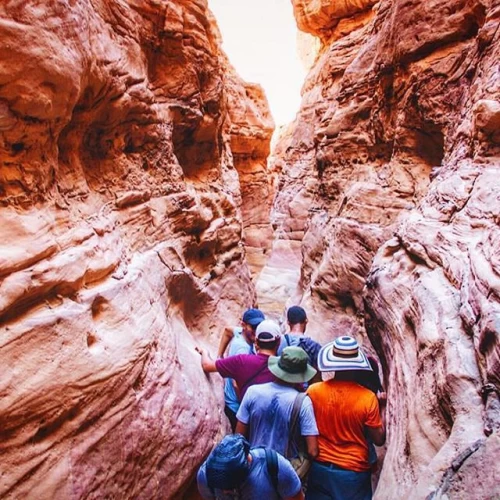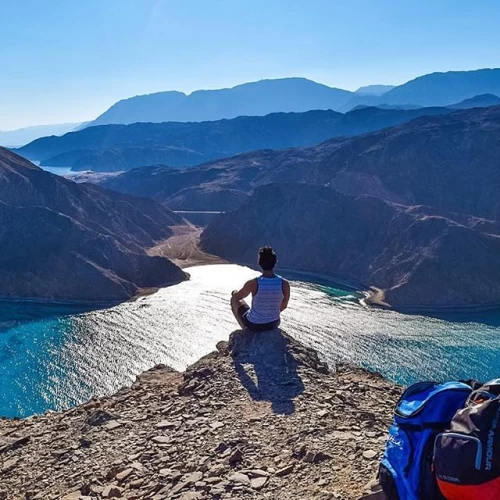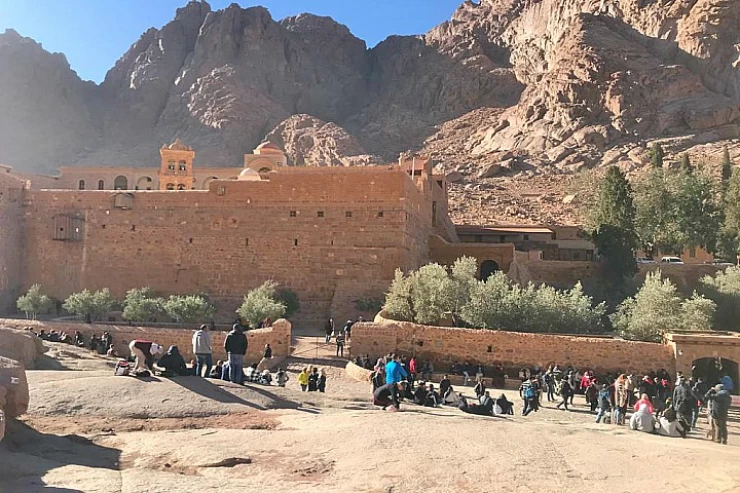
Mount Sinai
Mount Sinai is regarded as a holy site by Jews, Christians, and Muslims, as it is the location where Prophet Moses received the tablets containing the Decalogue. According to tradition, God first communicated with him in the valley at its base, a site now known as the Burning Bush.
Reaching an elevation of 2,285 meters, this mountain, referred to in Arabic as Gebel Musa (the Mountain of Moses), overlooks the Monastery of Saint Catherine. The summit, known as Jabal Mousa, is believed to be Mount Horeb, as mentioned in the Bible, where Moses is said to have spent forty days and nights prior to receiving the Decalogue. While some historians and archaeologists propose alternative locations for Mount Horeb in Jordan or other regions, this has not deterred the numerous pilgrims who visit annually.
For those interested in exploring Mount Sinai, consider participating in one of Egypt's luxury tours, which offer accommodations in premier hotels and Nile cruises. If you are traveling on a budget and wish to save time and money, our extensive range of affordable Egypt tour packages is available. Additionally, for individuals who have experienced accidents and require assistance due to physical injuries, our professional operators have tailored a selection of wheelchair-accessible tour packages in Egypt, featuring accessible vehicles and facilities, which is a key aspect of our classic tours.
Visits to the summit of Mount Sinai are not solely for religious purposes; many travelers return after visiting the Monastery of Saint Catherine to witness the breathtaking sunrise from the mountain's peak.
There are two primary routes to reach the summit. For those in good physical condition, the 3,750 Steps of Repentance provide the most direct path.
The path of self-reproach is marked by various significant locations, including the Gate of Confession, where a monk once listened to the confessions of pilgrims, and the well of Moses, which emerges from a small, low cave.
Most visitors ascend in the evening to experience the night and witness the sunrise. For those wishing to stay overnight on the mountain, it is advisable to stop at Elijah's Basin, where one can also find marshy fields and a few small outlets. The temperature can be quite chilly even during summer, so it is prudent to dress warmly and carry a bag. At the summit, one can find the Chapel of the Divine, constructed in 1934 on the remnants of a 4th-century church. The breathtaking view encompasses the Gulf of Aqaba, the Gulf of Suez, the mountains of the continent, and the peoples of Asia.
In 530 A.D., the Monastery of Saint Catherine was established at the base of the northern mountain. It remains inhabited by a small number of monks from the independent Orthodox Church in Sinai and is recognized as one of the oldest monasteries in the history of Christianity, both in Egypt and globally. Its library contains ancient hereditary manuscripts, including the famous 4th-century Greek manuscript currently preserved in the British Museum.

















